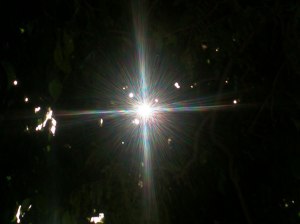Good evening from a chilly and overcast Surrey.
I owe a considerable apology for the delay in posting this Part 3 of ‘The Switch’. Papal resignations, meteor impacts and school holidays meant that this important topic required a temporary hiatus. Whilst the hiatus from the Blog was underway… the embers were gently glowing in the backburner of my mind. Occasional news items began stoking those embers into sudden flames once more.
The news that reignited those embers was released by NASA’s Jet Propulsion Laboratory on 19 February 2013. The article, ‘Cassini Sheds Light on Cosmic Particle Accelerators‘, describes unusual effects on Saturn’s magnetosphere, as observed by the Cassini Solstice Mission’s orbiting satellite. In a nutshell, particles were observed to accelerate to high energetic levels as they approached the gas giant’s magnetosphere, creating a shockwave. This type of acceleration is normally observed in the aftermath of a supernova explosion. I would recommend reading of the full article, given that it is enlightening to an immense degree.
Whilst the article suggests that ‘an unusually strong blast of solar winds‘ was the likely causal factor of the event observed by Cassini, the alternative suggestion (i.e., the acceleration of debris/detritus away from a stellar explosion/supernova) is an intriguing proposition in itself, given recent conversations with my Sister on the subject of supernovae. I would be interested in studying the findings further for two reasons: a) to ascertain the time period of the observed effects (the date) and b) correlating solar wind speeds/Muon particle measurements corresponding to that precise time period.
The Sisterly conversation, coupled with the emergence of the Saturn Shockwave observation, means meandering into the realms of speculation… and, perhaps, serves as a timely reminder that the World of Science should, on occasion, heed the call of conjecture – that investigation in the spirit of adventure is likely the best avenue to follow?
We need to remember that the expression ‘solar wind’ is a misnomer, given that the ‘wind’ itself is an ejection of highly energetic particles from the Sun. Bearing this in mind…
… let’s just assume, for the purpose of this Blog entry, that Cassini’s observations were undertaken during a period of relative solar calm. Those particles wouldn’t have appeared from nowhere – there would have been a source, for certain. Which begs another question (hypothetical, you understand…?)
Is it possible that our Solar System is, effectively, beginning to feel the buffeting effects of a long-distant supernova explosion? And could these possible buffeting effects perhaps offer us the solution to the genesis of the Solar System’s current period of undeniable change?
Astrophysicists have identified periods of past supernovae explosions from historical details. For example, SN185 was witnessed in the year 185AD, its visual splendour recorded by Chinese astronomers in the Book of Later Han. NASA’s Spitzer Space Telescope and the Wide-field Infrared Survey Explorer have since expanded upon the amazing spectral event witnessed by ancestors of long ago. SN1006 was the brightest supernova event in recorded history, with contemporary astronomer Frank Winkler remarking that, such was its magnitude, ‘people could have probably read their manuscripts at night by its light.’
However, I’m going to ask another hypotheticial question out loud. Would our Planet and/or Solar System have been affected by such events, especially if the event was close/explosive enough? During research for the original mass opus of The Journey, I had been spurred to investigate that very question, based on comments made by my Grandfather in 2010 about our Planet being affected by such an event circa 13,500-14,000 years ago. A search-engine question yielded some fascinating returns.
In the article ‘Forget About Global Warming: We’re One Step from Extinction!‘, Laura Knight-Jadczyk and Henry See discuss the astonishing scientific detective work undertaken by physicist Richard Firestone, along with geologists Allen West and Simon Warwick-Smith. Firestone, West and Warwick-Smith’s work focused on the ‘The Great Event of 12,000 years ago’, so catalogued and richly described in various myths and religious texts – and their findings were alarming. All evidence, scientifically verified and quantified, suggested that ‘The Great Event’ was triggered by a supernova explosion which had occurred 29,000 years prior to The Great Event. And the devastation our terrified ancestors faced at that time were visitors, disturbed from our Oort Cloud by the sheer force of the supernova explosion, raining down on them in rocky showers.
And could this happen today…? With meteors exploding over Russia? With increased numbers of Near Earth asteroids becoming apparent? Planetary changes affecting every planet in the Solar System? Three ‘Comets of the Century’ appearing in the space of 9 months? Mars under threat by an asteroid in 2014? How do we know it isn’t happening already…?
Of course… my musings are hypothetical, mere conjecture – those of an armchair astrophysicist. I could not possibly speculate further than this… could I?
Willow.
Further Interest:
‘The Cycle of Cosmic Catastrophes: How a Stone Age Comet Changed the Course of World Culture‘, Richard Firestone, Allen West and Simon Warwick-Smith (2006);
‘Terrestrial Evidence of a Nuclear Catastrophe in Paleoindian Times‘, Richard B. Firestone and William Topping, from The Mammoth Trumpet (2001);







Interesting, but its on the opposite side of the theories I find most interesting. The Electric Universe (See: thunderbolts.info for further info) present a very different angle on what supernovae actually are – and if you haven’t had an introduction to EU theory, I’d urge you to do so.
I was a quantum fanboy for two decades before I abandoned the nonsense of advanced and theoretical mathematics – using the abstract to explain reality was always a shaky road to stroll down and I’m glad I found a different path.
Peace,
Andy 🙂
Hi Andy,
Many thanks for your response 🙂
Thank you for mentioning tha amazing Thunderbolts Project 🙂 I’ve touched upon the Electric Universe Theory in earlier blogs (see my Blog dated 27 January 2013) and find their theories understandable and workable, especially their understanding of Heliophysics. I came to learn of The Thunderbolts via the wonderful Suspicious 0bservers. I hadn’t reached their theories re. supernovae – immense gratitude for pointing me in the right direction 🙂
Willow